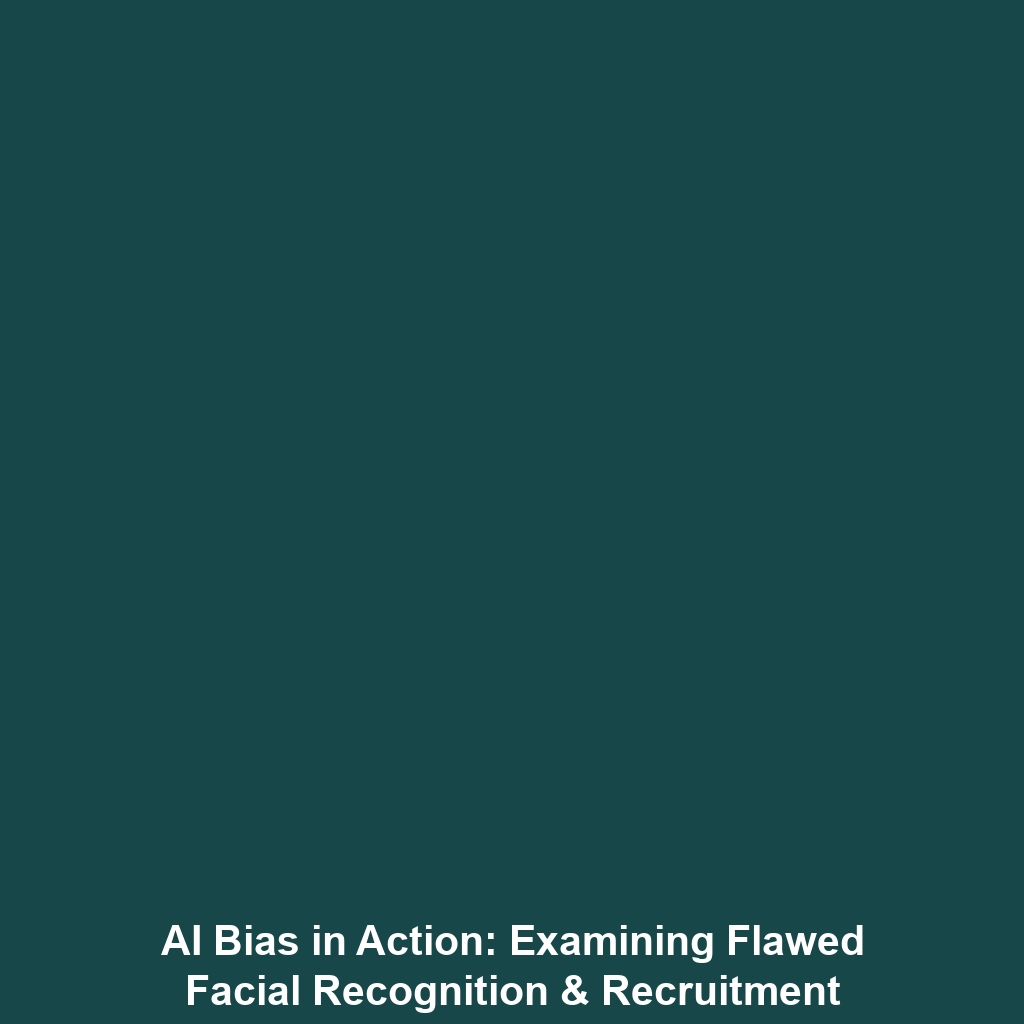Examples of AI Systems That Have Exhibited Bias in AI Ethics
Introduction
Artificial Intelligence (AI) has transformed numerous sectors by enhancing efficiency and decision-making. However, an alarming trend has emerged in the form of biased AI systems, notably in facial recognition and recruitment tools. The significance of addressing these biases extends beyond mere technological concerns; it raises essential questions about fairness, accountability, and ethical implications in AI Ethics. Understanding these examples not only informs developers and policymakers but is crucial for building equitable AI systems that respect diverse populations.
Key Concepts of Bias in AI Systems
Understanding Bias
Bias in AI refers to systematic and unfair discrimination resulting from algorithms that reflect historical inequalities or prejudiced data sources. This problem is particularly significant in the context of AI Ethics, encompassing issues of fairness, transparency, and accountability.
Types of Biased AI Systems
Two prominent applications of bias in AI systems include:
- Facial Recognition Technology: Studies have shown that many facial recognition systems have higher error rates for individuals from underrepresented groups, particularly women and people of color.
- Recruitment Tools: AI algorithms used for resume screening can inadvertently prioritize candidates based on biased training data, leading to discrimination against certain demographics.
Applications and Real-World Uses
Examples of AI systems exhibiting bias are prominent in various applications, underscoring critical challenges in AI Ethics:
Facial Recognition in Law Enforcement
Facial recognition technologies deployed in law enforcement have shown inconsistencies and biases, often failing to accurately identify minorities, leading to wrongful accusations and reinforcing systemic racism.
AI Recruitment in Hiring Processes
In recruitment, AI tools used to automate candidate selection often favor profiles similar to existing employees, thus perpetuating historical biases in hiring practices. This has raised significant concerns about equality in employment opportunities.
Current Challenges in Addressing AI Bias
There are several challenges and limitations in studying or applying examples of biased AI systems within AI Ethics:
- Data Quality: Poor quality data can lead to biased algorithm outputs.
- Lack of Transparency: Many AI models operate as ‘black boxes,’ making it difficult to identify and correct biases.
- Regulatory Hurdles: There is a lack of comprehensive regulations concerning AI ethics and bias mitigation.
Future Research and Innovations
Future research is pivotal in addressing biases in AI systems, with exciting innovations on the horizon:
Advances in Bias Detection
Next-generation technologies being developed focus on improved bias detection methodologies, enhancing transparency, and promoting fairness across AI applications.
Ethical AI Frameworks
Establishing robust ethical frameworks will guide the development of AI systems to ensure they are designed to minimize bias and promote inclusivity.
Conclusion
In conclusion, biased AI systems like facial recognition and recruitment tools create serious implications within AI Ethics that demand urgent attention. Understanding these biases is vital for developing fair and accountable AI technologies. Stakeholders are called to action to participate in the discourse on ethical AI, ensuring equitable outcomes for all community members. For further insights, explore our articles on AI Fairness and Ethical AI Development.
